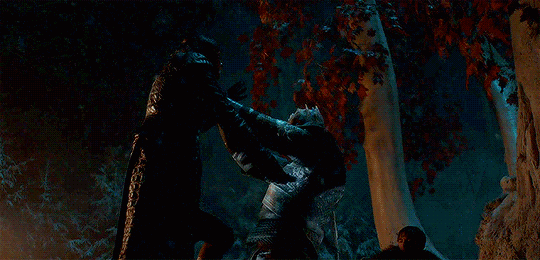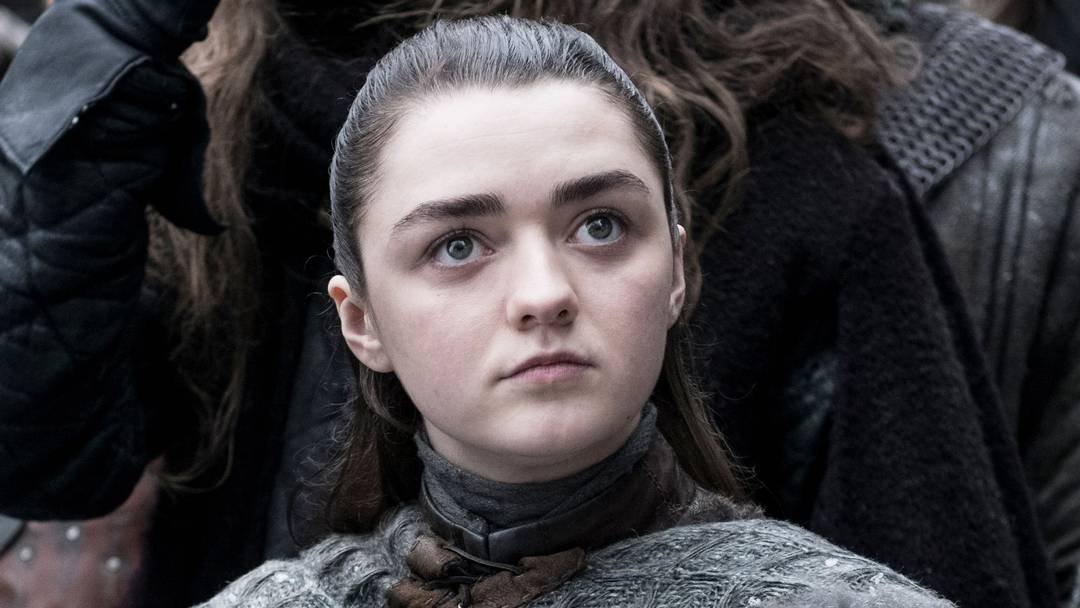Game of Thrones: Was Arya Stark” The Prince That Was Promised”?
https://youtu.be/1whrQ0RCSUk
About the prophecy of “The Prince Who Was Promised”
With the threat of the White Walkers eradicated, many Game of Thrones fans are wondering about a central prophecy that has existed in the show for years. Back in Season 2, Game of Thrones introduced the prophecy of “The Prince Who Was Promised,” an alleged savior who would rise up and lead the people against a darkness. Melisandre, the Red Woman most responsible for pushing this prophecy, believed that Stannis Baratheon was the promised hero, but she eventually came to believe that Jon Snow was her prophesied hero. A popular counter-theory was that Daenerys was the actual Prince, as the original translation of the prophecy used a gender neutral word that could refer to either a man or a woman.
Is Arya Stark Azor Ahai, The Prince That was Promised in Game Of Thrones
However, at the end of the yesterday’s episode, it was Arya Stark who defeated the Night’s King, stabbing him with the Catspaw Valyrian dagger that kicked off the conspiracies and mistrust between the Great Houses that launched the War of the Five Kings. While Melisandre seemed to know that Arya would end up killing the Night’s King (she hinted at it back in Season 3 and then repeated her words about Arya shutting many eyes, including blue eyes in last night’s episode), Arya didn’t really match the prophecy about the Prince Who Was Promised at all.
Also Read: ‘Game of Thrones’ Star Ser Jorah a.k.a Iain Glen is to be Cast as Batman in ‘Titans’

Couple of possibilities after yesterday’s episode
There’s a couple of distinct possibilities as to the resolution of this prophecy. The prophecy could be totally wrong, it could refer to Arya, or it could still refer to Jon Snow. While Snow didn’t deliver the fatal blow, he was responsible for gathering the army who would oppose the Night’s King over the course of several seasons. It was Snow who allowed the Wildlings to come south of the wall, Snow who rallied the armies of the North to re-take Winterfell, and Snow who convinced Dany to put aside her quest to take the Iron Throne and head to Winterfell instead. You’ll also remember that Arya only headed to Winterfell because she heard Snow had re-taken their home. At the start of Season 7, she planned to return to King’s Landing to assassinate Cersei. Even Beric Dondarrion, who sacrificed himself to save Arya, was only in Winterfell because Jon recruited him to his expedition north of the Wall to capture a wight. Sure, Beric had headed north to fight “the true enemy,” but Jon was the rallying point for the entire battle against the dead. The prophecy also never explicitly said that the Prince Who Was Promised would kill the Night’s King, only lead humanity against this rising darkness.
There’s still a lot about the prophecy that is a bit more unclear, including the Prince’s alleged use of Lightbringer, a legendary sword made of “living fire.” One could argue that Arya represents Lightbringer. As an assassin, Arya could be called a living weapon of sorts. The original Lightbringer was forged three times, and Arya has experienced three “rebirths” over the course of the series. Arya was originally trained in the way of the sword by Syrio Forel, then learned during her time with the Hound, and then finally finished her training with the Faceless Men. Each of those experiences led to major revelations and eventually shaped her to become the woman that killed the Night’s King and ended the threat of winter once and for all.
If you’ve ever wondered just how badass Arya Stark truly is, Sunday night’s episode of Game of Thrones(“The Long Night”) gave us a very clear answer. As the Battle of Winterfell progressed, things went from bad to downright hopeless. The great battle was all but lost, and as the Night King slo-mo walked toward Bran and reached for his icy sword, Arya (a.k.a. No One) leapt from the shadows and ultimately slayed the Night King with a perfectly placed thrust of her Valyrian steel dagger, striking him in the exact place the Children of the Forest ceremonially inserted the dragonglass into his chest all those thousands of years ago. Arya single-handedly saved the entire world, including the North, and those in it still among the living (R.I.P. Theon, Lyanna, Jorah, Edd, and many more).

Arya’s second encounter with Melisandre
Back in Season 3, Arya had a brief encounter with Melisandre, who told her: “I see a darkness in you. And in that darkness, eyes staring back at me. Brown eyes, blue eyes, green eyes. Eyes sealed shut forever. We will meet again.” The priestess reminded Arya of this down in the cellars of Winterfell, where it became clear that those “blue eyes” belonged to the Night King.
So was killing the Night King enough to make Arya the promised savior? Maybe. Melisandre’s focus on Arya makes it seem like a big possibility — not to mention, the red witch died just before dawn, thereby fulfilling her duty to the Lord of Light (and her service to the plot of the show) — as does the fact that Beric Dondarrion countless resurrections over the years appear to have been for the sole purpose of sacrificing himself to save Arya during the Battle of Winterfell. “The Lord brought him back for a purpose,” Melisandre told Arya upon Beric’s end. “Now that purpose has been served.” Yes, she didn’t kill the Night King with Lightbringer as the prophecy states, but we know that in the world of Game of Thrones all things are not to be interpreted in the literal sense.
Let’s wait
With three episodes left, we’ll have to see if the Prince Who Was Promised will be revealed, or if the real Prince was the friends who was made along the way.
References: comicbook





